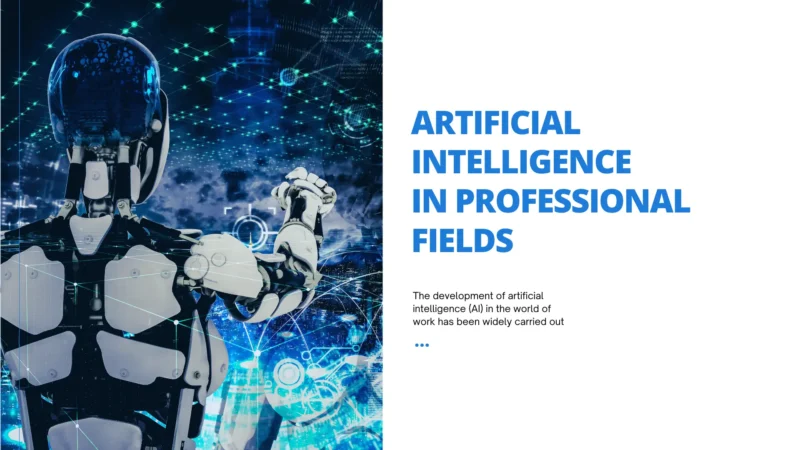Greetings, fellow Nawala! May you always be in good health.
This is the IAES Nawala of the Institute of Advanced Engineering and Science. Today we are sharing news about the role of AI in the world on the job. The development of artificial intelligence (AI) in the world of work has been widely carried out. As previously discussed regarding AI in the healthcare, it turns out that the role of AI other than in the healthcare world is also quite a lot. As research by Wu et al. (2023) in a paper explains that AI is also able to contribute to the world of policing. They revealed that AI can act as a lie detection system in investigations. AI can identify whether someone is lying based on their emotional responses. However, the use of AI in interrogation must consider ethical issues and requires careful consideration.
The use of artificial intelligence in interrogation: lies and truth
Yi-Chang Wu, Yao-Cheng Liu, Ru-Yi Huang
Following the development of artificial intelligence technology, a new trend has emerged in which this technology is increasingly used in case investigations. In this study, we developed a lie detection system that can instantly determine whether an interrogee is lying depending on their emotional responses to specific questions. Investigators then use these data, in addition to their personal experiences and case information, to adjust their interrogation strategies and techniques, thereby leading the interrogee to confess and accelerating the investigation process. Our system collects data using OpenFace and performs deep learning using gcForest. Deep learning training was performed using a real-life trial dataset, the Miami University Deception Detection Database, and a bag-of-lies dataset, and their corresponding trained systems achieved a detection accuracy of 95.11%, 90.83%, and 88.19%, respectively.
In the world of construction and property, Dang et al. (2022) applied AI to detect bridge damage. This aims to monitor and predict bridge failures so that maintenance and repairs can be carried out in a timely manner. The process involves collecting data from various sources, such as sensors, satellite images, and historical records, to create a comprehensive database. Next, relevant features that indicate bridge damage such as cracks, corrosion, or other signs of deterioration are extracted from the data. AI-enabled detection systems are also integrated with existing bridge management systems to improve overall performance. The advantages of applying AI in bridge damage detection include increased accuracy and efficiency in detecting and monitoring damage, leading to better decision-making and resource allocation.
Applying artificial intelligence for the application of bridges deterioration detection system
Xuan-Kien Dang, Le Anh-Hoang Ho, Xuan-Phuong Nguyen, Ba-Linh Mai
Recently, advances in sensor technologies, data communication paradigms, and data processing algorithms all affect the feasibilities of the bridges structural health monitoring and deterioration detection, and other implementations of monitoring operations. The paper proposes a method to design an irregularity detection and monitoring system for road bridges that combines internet of things (IoT) and artificial intelligence (AI) technologies. Raspberry Pi 4 embedded computer integrating IoT and AI technology with convolutional neural network (CNN) is employed to simultaneously monitor remote bridges on websites and apps via Google Firebase cloud database. The first step of successful testing in the laboratory showed that the system can work stably and coincide with the proposed goals.
Maintaining power quality in electric vehicles is becoming increasingly important due to the mass transition phase of electrification in the world’s transportation sector. Along with high sales of electric vehicles comes the challenge of integrating electric transportation with the power grid. Kuruvilla and Kumar (2023) discussed various approaches of AI techniques used for power quality problems to effectively integrate electric cars into the power grid covering approaches, developments, and limitations. The results of their study indicate the need for AI in the future during the transformation of the electrification era.
Necessity of artificial intelligence techniques for power quality issues in electric vehicles
Vidhya Kuruvilla, Pandiyan Venkatesh Kumar
World transportation is in an electrified mass transitional phase due to the predominant features such as a greener environment, fewer maintenance requirements, improved reliability and energy management efficiency compared to conventional transportation. Numerous difficulties have emerged since electric vehicle sales hit record highs, including how electrified transportation works with the grid. Emerging innovations and technological advances in the field of artificial intelligence have led to the development of enhanced controllers for electric vehicle penetration with the grid. This work includes information on the integration of artificial intelligence strategies used for the mitigation of power quality issues. By merging artificial intelligence techniques into the grid, users can achieve efficient energy use and beneficial power interactions between the grid and electric vehicles. To assess the network’s practicality, this research develops a charging model that uses a Tasmanian Devil optimization (TDO) algorithm based on MATLAB software. According to research, TDO improves the waveform quality by reducing the THD with better performance and achieves efficient power transfer between the grid and EVs.
The above articles are a small part of the research on the role of AI in the workplace. To get more information, readers can visit the page and read the articles for FREE through the following links: https://ijra.iaescore.com/, http://telkomnika.uad.ac.id/, and https://ijpeds.iaescore.com/.
By: I. Busthomi

